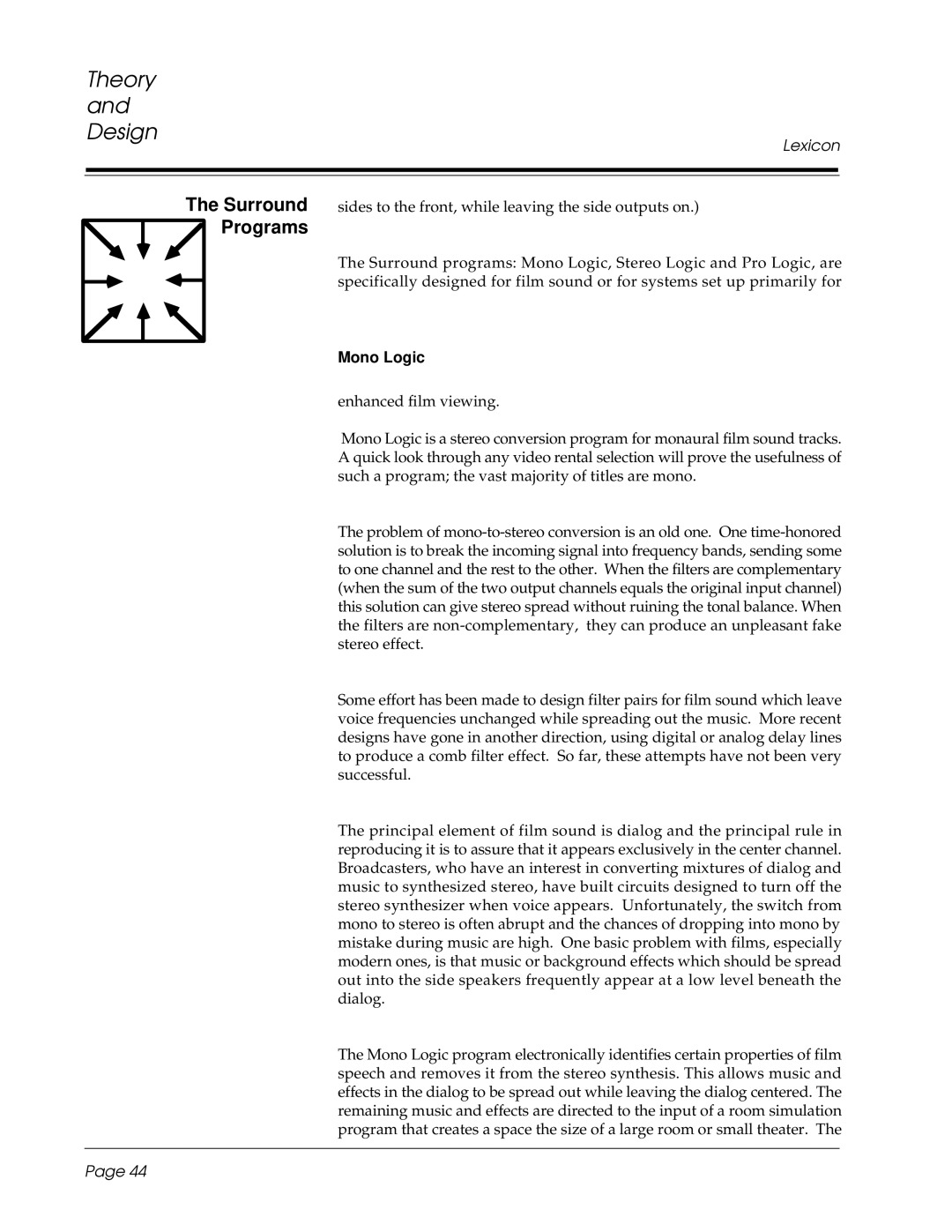
Theory and Design
Lexicon
The Surround  Programs
Programs
sides to the front, while leaving the side outputs on.)
The Surround programs: Mono Logic, Stereo Logic and Pro Logic, are specifically designed for film sound or for systems set up primarily for
Mono Logic
enhanced film viewing.
Mono Logic is a stereo conversion program for monaural film sound tracks. A quick look through any video rental selection will prove the usefulness of such a program; the vast majority of titles are mono.
The problem of
Some effort has been made to design filter pairs for film sound which leave voice frequencies unchanged while spreading out the music. More recent designs have gone in another direction, using digital or analog delay lines to produce a comb filter effect. So far, these attempts have not been very successful.
The principal element of film sound is dialog and the principal rule in reproducing it is to assure that it appears exclusively in the center channel. Broadcasters, who have an interest in converting mixtures of dialog and music to synthesized stereo, have built circuits designed to turn off the stereo synthesizer when voice appears. Unfortunately, the switch from mono to stereo is often abrupt and the chances of dropping into mono by mistake during music are high. One basic problem with films, especially modern ones, is that music or background effects which should be spread out into the side speakers frequently appear at a low level beneath the dialog.
The Mono Logic program electronically identifies certain properties of film speech and removes it from the stereo synthesis. This allows music and effects in the dialog to be spread out while leaving the dialog centered. The remaining music and effects are directed to the input of a room simulation program that creates a space the size of a large room or small theater. The
Page 44
